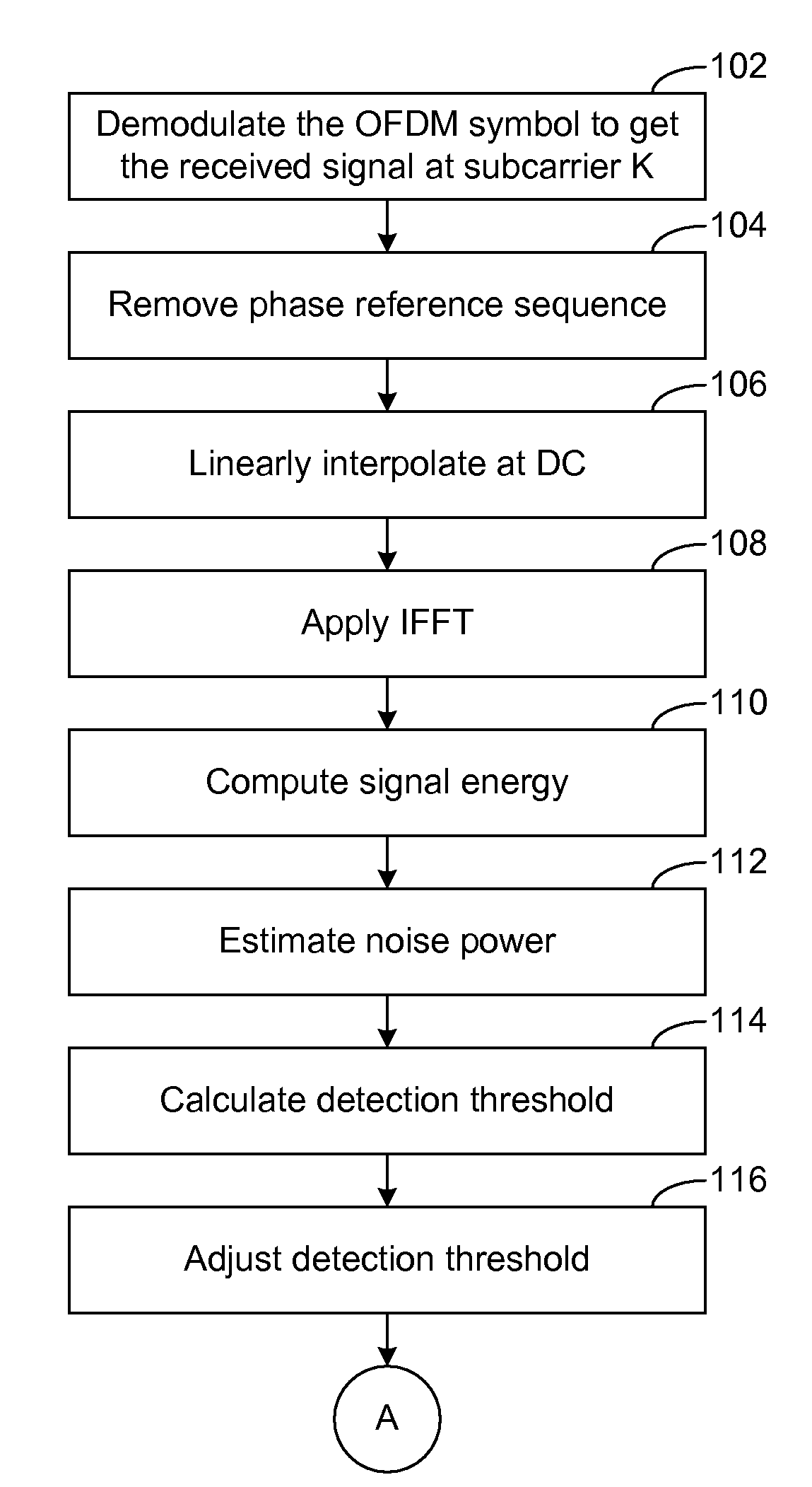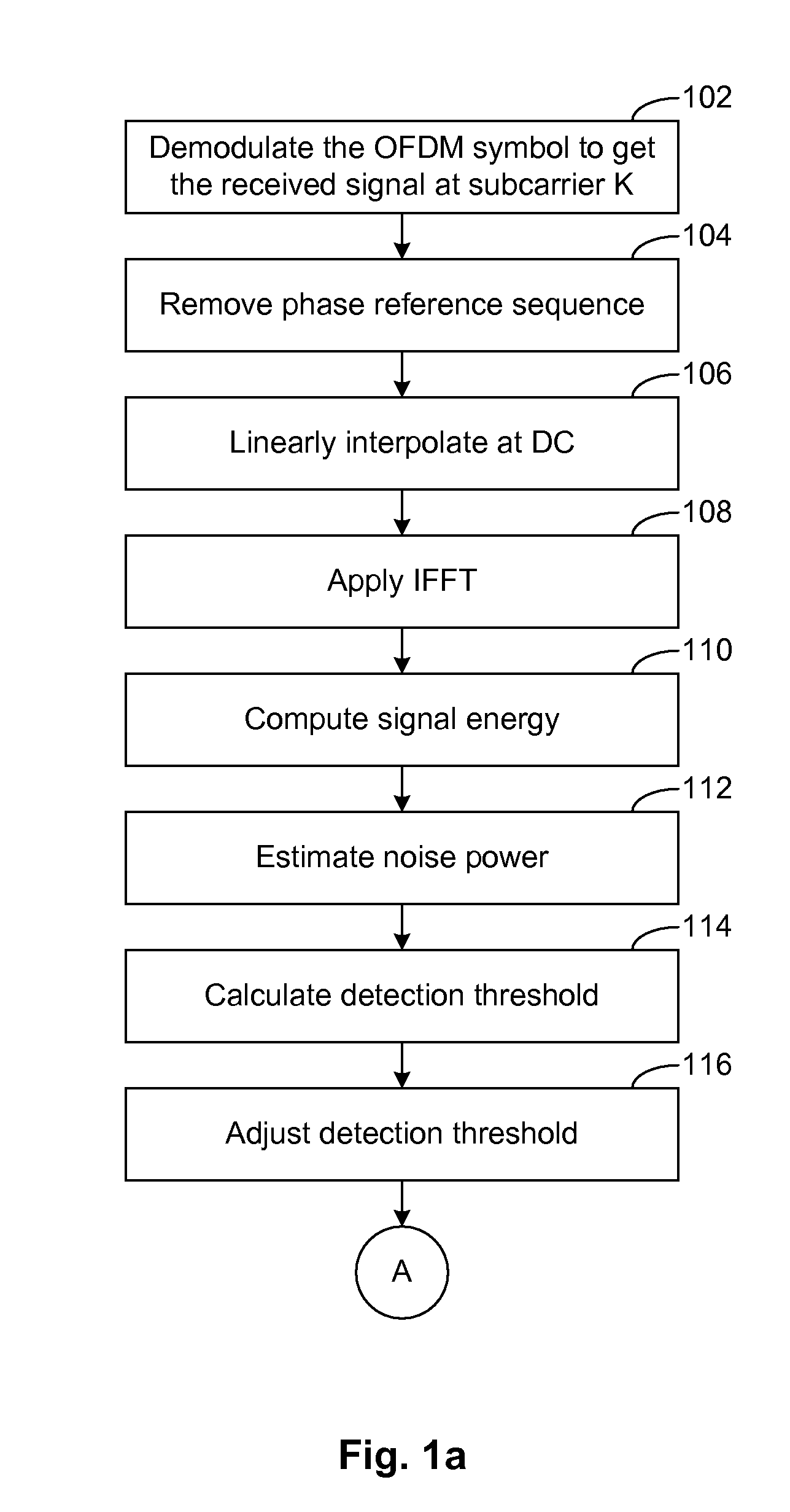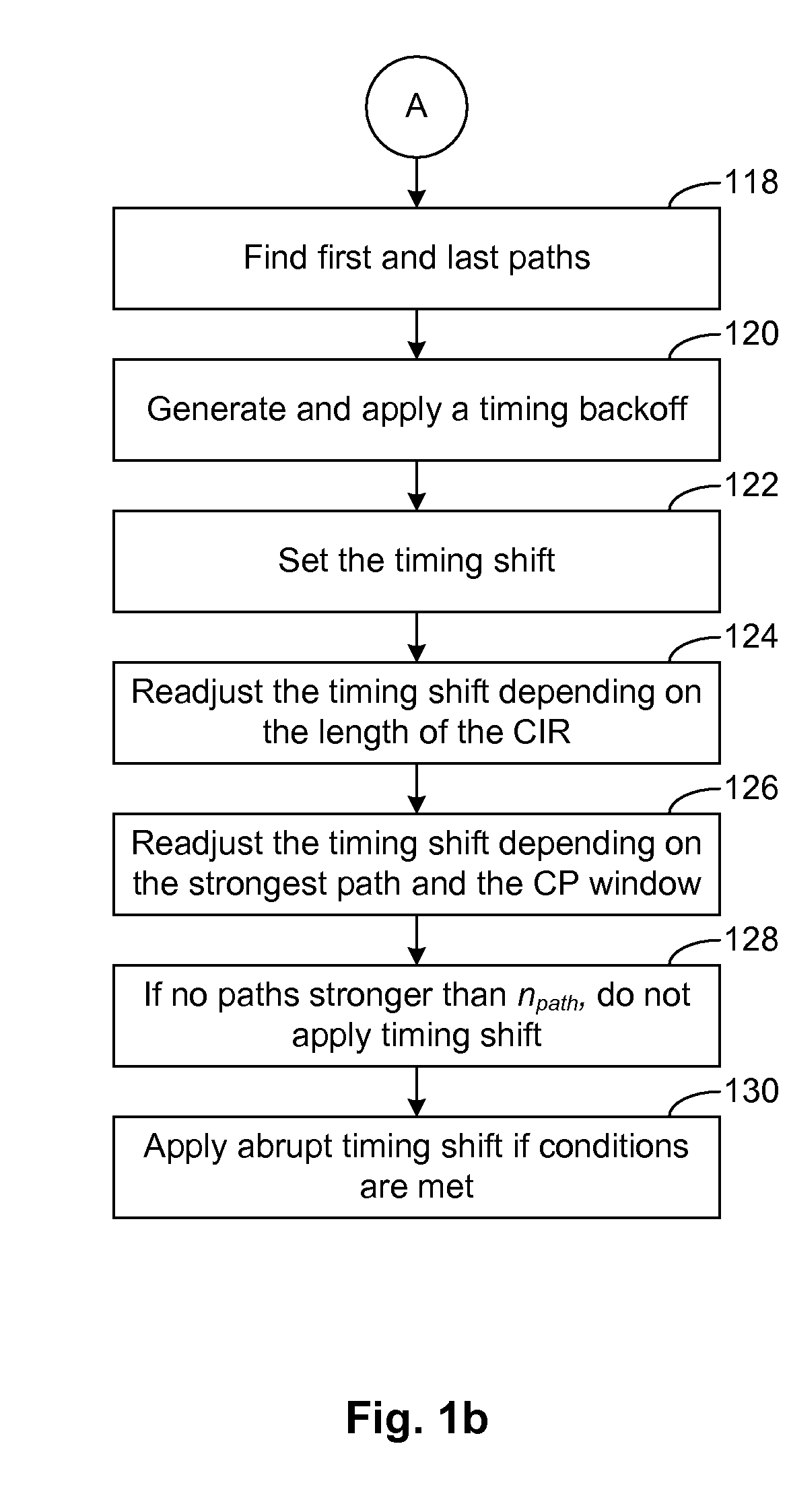Methods for PRS-Based Symbol Timing Adjustment for OFDM Systems
a timing adjustment and symbol technology, applied in the field of timing synchronization for a received ofdm signal, can solve the problems of difficult timing synchronization and frequency synchronization, inability to accurately synchronize individual symbols between the transmitter and the receiver, and inability to accurately separate individual symbols, so as to avoid abrupt timing jitters and improve immunity against channel variation.
- Summary
- Abstract
- Description
- Claims
- Application Information
AI Technical Summary
Benefits of technology
Problems solved by technology
Method used
Image
Examples
Embodiment Construction
[0022]Once signal acquisition is achieved, signal reception begins from the next transmission frame. For each transmission frame, fine timing synchronization is performed using the PRS in the synchronization channel, such that a fast Fourier transform (FFT) window can be properly positioned for minimum inter-symbol interference.
[0023]FIGS. 1a-1b illustrate a process flow for fine timing synchronization. The fine-frequency-corrected PRS signal can be denoted, {tilde over (x)}[n], where n corresponds to a sample count of a received signal. An OFDM symbol is demodulated 102 by cyclic prefix removal and FFT to get the received signal at subcarrier k,
where Zk is the received signal at subcarrier k (1)
[0024]The phase reference sequence can then be removed 104 from the observed PRS symbol in the frequency domain,
Hk=zk(z_k)*,for-K2≤k≤K2-1,k≠0.(2)
where K is a number of used subcarriers for a respective mode.
[0025]Next, a data carrier (DC) can be linearly interpolated 106 by using, H0=(H−1+H1...
PUM
 Login to View More
Login to View More Abstract
Description
Claims
Application Information
 Login to View More
Login to View More - R&D
- Intellectual Property
- Life Sciences
- Materials
- Tech Scout
- Unparalleled Data Quality
- Higher Quality Content
- 60% Fewer Hallucinations
Browse by: Latest US Patents, China's latest patents, Technical Efficacy Thesaurus, Application Domain, Technology Topic, Popular Technical Reports.
© 2025 PatSnap. All rights reserved.Legal|Privacy policy|Modern Slavery Act Transparency Statement|Sitemap|About US| Contact US: help@patsnap.com



